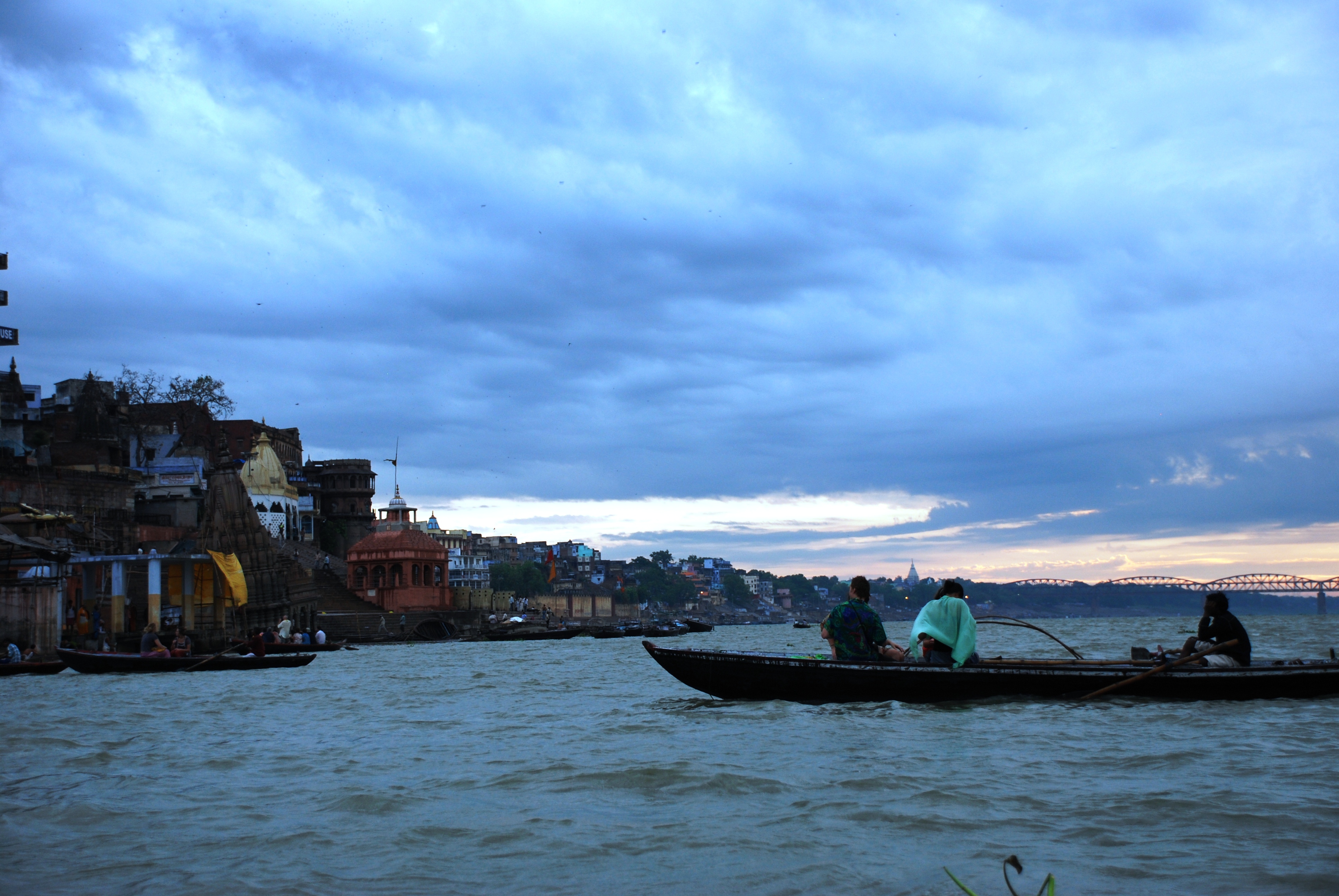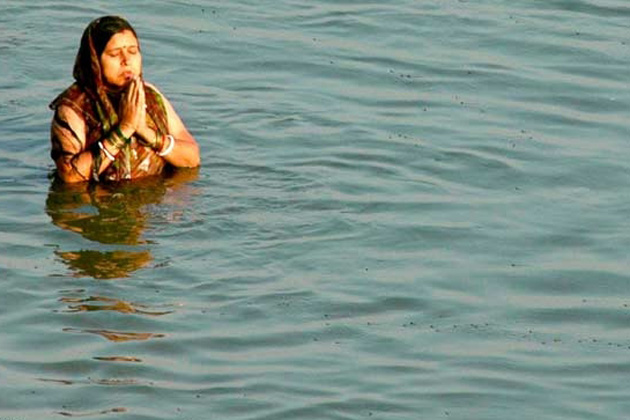On Dasashwamedh Ghat in Banaras, people jostle with each other to touch the holy waters of the river Ganga. Old people take careful steps, while younger ones jump into the river from a height, slapping, playing, and laughing. Some mutter prayers to Goddess Ganga as they take dips ritualistically amidst the flotsam of rituals, decayed flowers and pieces of bones and plastic kiss the corners of the ghats. Cows munch on garbage while tourists crane their cameras from boats, their fingers pressing the button for panicked clicks. It’s a chaotic scene that celebrates life and death in an endless cycle.
She’s a goddess who travels through three worlds
For the river Ganga, with a whopping 2,525 kilometers of length that begins in western Himalayas and continues through the Gangetic plains into Bangladesh and then the Bay of Bengal, is not just a river for Hindus in India. She’s a goddess who travels through three worlds, making her an important highway if you want to reach either Heavens or Netherworld from Earth. In Sanskrit, Ganga is also called Triloka-patha-gamini or Tripathaga, or one who travels the three worlds.

The legend goes that it was the Vamana avatar of Lord Vishnu who released the holy waters of Ganga from the causal ocean, that vastness that lives beyond time. As he extended his left foot to the end of the universe, so he could ask for the whole universe in one go from asura king Mahabali, Vamana pierced a hole in its covering with the nail of his big toe. Through the hole in the universe’s fabric, the divine water of the causal ocean flowed out into Brahmaloka, or the topmost level of heavens. There it stayed for several centuries till Bhagiratha came into the story.
When a king needs a river
It was a king named Sagara, Bhagiratha’s ancestor who needed Ganga’s waters. By magic he acquire 60,000 sons and then did a yagna where a horse played an important ritualistic part. A jealous Indra, king of the devas, stole the horse. The 60,000 sons went out to look for it and reached Netherworld where it stood grazing next to sage Kapila who was meditating. Now Indra had smartly placed the horse next to the powerful sage, which the sons didn’t realise. Thinking he stole the horse, they attacked the hermit, insulted him, forcing him to open his eyes. The laser power of his eyes burnt all 60,000 of them to death. Their souls wandered the Netherlands as ghosts since their final rites hadn’t been performed. The king and then the king’s grandnephew Anshuman prayed to Brahma to bring the holy waters of Ganga on Earth so they could finish the final rites. Both he and his son were unsuccessful. It was finally Bhagiratha, their descendent to whose prayers Brahma relented and ordered Ganga to fall from the Heavens into Earth and then go on to Netherworld to create a pathway so the trapped souls of 60,000 warriors could ascend to Heaven.
Not that Goddess Ganga liked the order too much.
She decided to destroy Earth on the way to Netherworld. She fell with such force that Earth began to unravel. A panicked Bharigatha prayed to Shiva to break her descent. Shiva agreed and when an angry Ganga fell on Shiva’s head, he calmly trapped her in his hair, letting her out in small streams. So Ganga fell gently onto Earth from Heavens, before moving onto the Netherworld.
At the evening dusk kisses the ghat and it prepares for Ganga aarti, I move from Dasashwamedh to Manikarnika, the most popular ghat for Hindu cremations. The Hindus believe that a soul of a dead can reach heavens if a drop of the waters of Ganga is put into the mouth, or ashes of the dead are poured into the river. Funeral pyres reflect orange in the dark and foreboding waters of this magic goddess, waiting for new souls to be transported to other planes. I wonder whether there’s ever a traffic jam on these highways of interplanar travel.
Also published in Discover India in 2017. For more such tales, head to the Tall Tales section. (Image source: This and this.)

